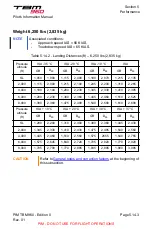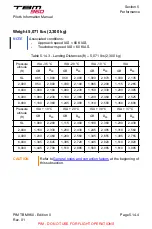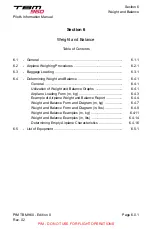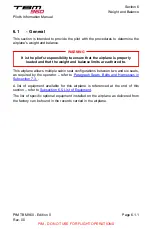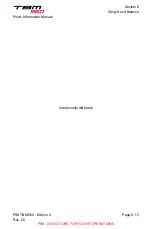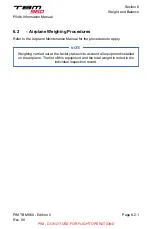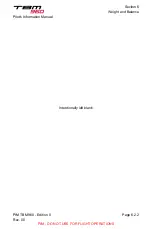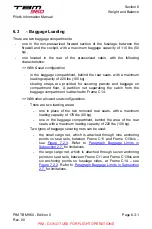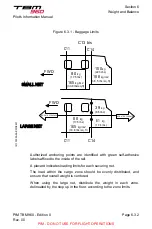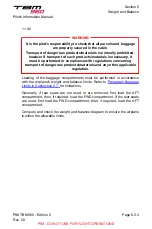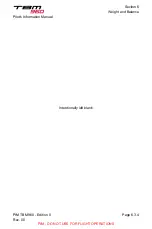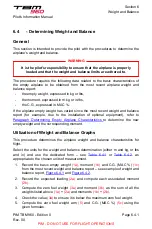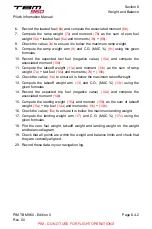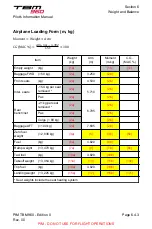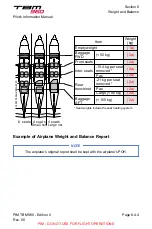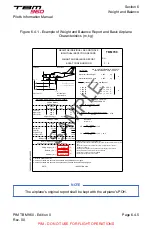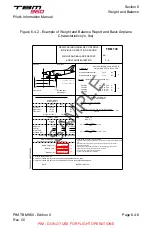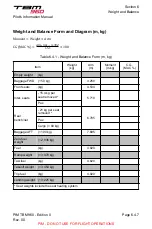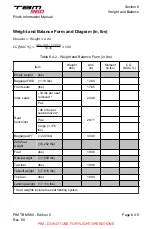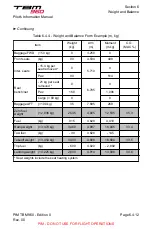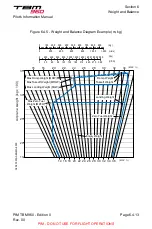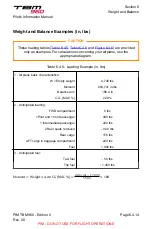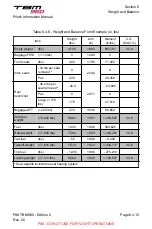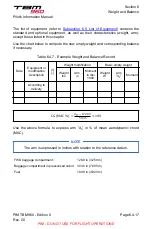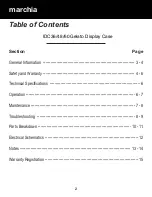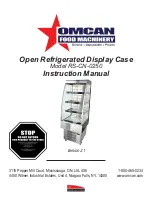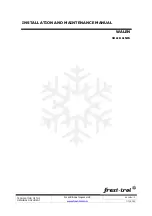
6. Record the loaded fuel
(6a)
and compute the associated moment
(6b)
.
7. Compute the ramp weight
(7a)
and moment
(7b)
as the sum of zero fuel
weight
(3a)
+ loaded fuel
(6a)
and moments
(3b)
+
(6b)
.
8. Check the value
(7a)
to ensure it is below the maximum ramp weight.
9. Compute the ramp weight arm
(9)
and C.G. (MAC %)
(9c)
using the given
formulas.
10. Record the expected taxi fuel (negative value)
(10a)
and compute the
associated moment
(10b)
.
11. Compute the takeoff weight
(11a)
and moment
(11b)
as the sum of ramp
weight
(7a)
+ taxi fuel
(10a)
and moments
(7b)
+
(10b)
.
12. Check the value
(11a)
to ensure it is below the maximum takeoff weight.
13. Compute the takeoff weight arm
(13)
and C.G. (MAC %)
(13c)
using the
given formulas.
14. Record the expected trip fuel (negative value)
(14a)
and compute the
associated moment
(14b)
.
15. Compute the landing weight
(15a)
and moment
(15b)
as the sum of takeoff
weight
(11a)
+ trip fuel
(14a)
and moments
(11b)
+
(14b)
.
16. Check the value
(15a)
to ensure it is below the maximum landing weight.
17. Compute the landing weight arm
(17)
and C.G. (MAC %)
(17c)
using the
given formulas.
18. Plot the zero fuel weight, takeoff weight and landing weight on the weight
and balance diagram.
19. Check that all points are within the weight and balance limits and check that
they are vertically aligned.
20. Record these data in your navigation log.
Section 6
Weight and Balance
Pilot's Information Manual
PIM TBM 960 - Edition 0
Rev. 00
Page 6.4.2
PIM - DO NOT USE FOR FLIGHT OPERATIONS


